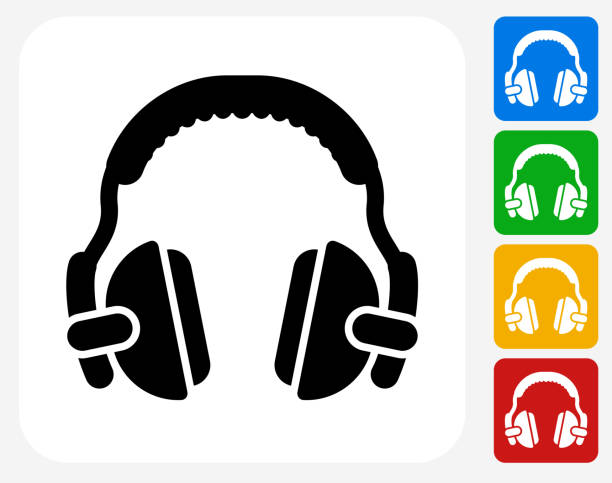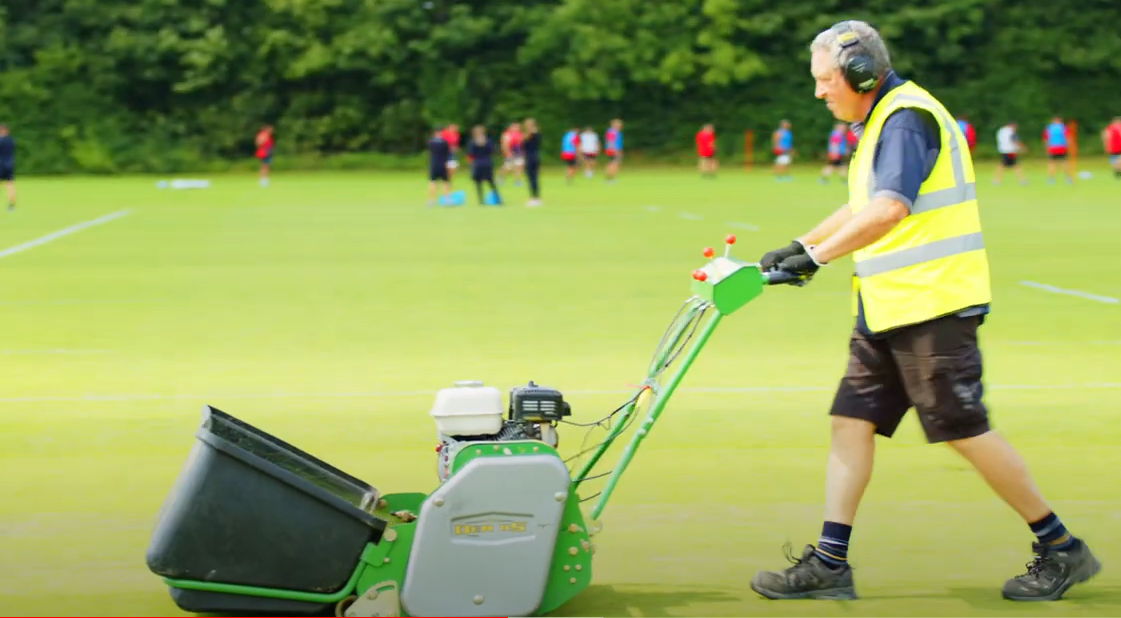What is meant by ‘Noise at Work’?
Noise can be defined as ‘unwanted sounds’. While sounds are around us all day, every day, what is sound to one person can very well be noise to somebody else, but anyone who is exposed to noise is potentially at risk. The combination of volume, pitch and frequency can contribute to extent of harm caused and the longer individuals are exposed to it, the more likely they are to suffer long term harmful effects.
Noise-induced hearing loss is the most common preventable occupational health condition in the world and is totally preventable.
What causes noise at work?
Noise, to some extent is present in all places of work. For the ground staff the main sources of noise might include:
- Machinery
- Handheld tools (strimmers, hedge cutters, leaf blowers, etc)
- Bench tools (grinders, pillar drills etc)
- Workplace transport (tractors and associated fittings, rollers, ride on mowers, etc)
- Electrical motors and generators.
- Air lines
- Loud music
Grounds management uses a lot of air-cooled engines that are often external to the machine, and due to contact between parts moving at high speeds it can be a noisy activity. Couple this with activities carried out over long periods results in a high level of exposure.
What are the effects of noise induced hearing loss?
This largely depend on the extent or stage of hearing loss. In the later stages noise induced hearing loss can be permanent and debilitating, the trick is to identify it early and seek medical attention. In the early stages you might suffer from:
- Ringing in the ears
- The inability to hear soft or high pitch sounds
- Difficulty in understanding conversations at a distance or in crowds
- Watching TV or listening to music with the sound turned up
- Finding it difficult to identify which direction noise is coming from.
The long-term effect of noise is not only physiological but also psychological leading to feelings of detachment, exclusion and frustration.
What do I need to do?
It is your duty to identify potential harmful noise in the workplace, risk assess the potential for harm, control the risk and communicate your findings and intentions to your workforce.
Conduct a Noise Survey
This can sound daunting; it can be quite simple.
Check your machinery, it should be labelled with a noise level in decibels (dB).
- For smaller items check the operator’s manual that should also give an indication as to the level of noise it generates.
- Mobile phone Apps are also available to measure noise levels. Follow the instructions provided and you should have a good indication of noise levels.
- Measure the length of time people are exposed to the noise.
- Use the HSE Noise Exposure Calculator, here and follow the instructions.
Take action
The results of your survey will steer you in your next action. Irrespective of the noise levels it is good practice to reduce noise to a reasonable level to provide a comfortable place of work. This might not always be possible or affordable, the following hierarchy might help:
- Think how you can remove the source of noise e.g. replace a diesel powered machine with a battery powered one.
- Separate the person from the noise – put noisy equipment in an acoustic room/chamber.
- Engineering controls – soundproof noisy parts of a machine, keep engine covers/compartments closed.
- Use screens or barriers in the workplace to deflect noise, noise absorbing material can be used on walls and other surfaces that noise can bounce off.
- Design the workplace to separate noisy equipment and designate noise protection areas where ear protection must be worn.
- Control the amount of time workers are exposed to noise.
Other controls might include:
- Regular maintenance - this can significantly reduce the noise of a machine.
- Purchase policy - when you next purchase a machine, note the noise levels it creates, can you purchase a less noisy machine that does the same job?
If all controls have been considered and noise levels cannot be reduced to below the ‘lower action level’ then ear protection will need to be considered.
Noise survey results
|
|
Control & Monitor |
Lower exposure action level |
Upper exposure action level |
|
Daily or weekly personal exposure level |
<80dB |
≥80dB |
>85 dB |
|
Peak sound pressure exposure |
<135dB |
≥135dB |
>137dB |
|
Action to be taken |
Monitor the noise levels. No further actions required; no ear protection required |
Reduce noise levels where reasonably practicable, offer ear protection. |
Reduce noise levels where reasonably practicable, provide personal ear protection. |
Where the lower exposure action value is reached then action should be taken to reduce the exposure to noise using the controls mentioned earlier. So long as the exposure remains below the upper action value then personal ear protection need not be mandated but must be provided on request.
Where the upper exposure action value is reached then again action should be taken to reduce the exposure to noise to an acceptable level. If this is not reasonably practicable then personal ear protection must be provided.
When personal ear protection is provided you have a duty to provide information instruction and training.
Selection of personal ear protection
When selecting personal ear protection, you need to consider the following:
It provides sufficient protection
When purchasing personal ear protection, it will be provided with a Single Number Rating (SNR) value. This value is directly related to the level of protection provided. It is important you select a protection value suitable for the noise level present. For example, your worker is exposed to 90dB (A) and you want to lower the noise exposure to an acceptable level. It is recommended you lower the sound level received by the worker to between 70dB and 75dB.
|
dB |
60 |
|
|
|
|
65 |
|
|
|
|
70 |
|
|
|
|
75 |
|
|
|
|
80 |
|
|
|
|
85 |
|
|
|
90 |
|
|
|
|
|
|
|
|
|
|
|
|
|
|
|
|
|
|
|
|
|
|
|
|
|
|
|
|
|
|
|
|
|
|
|
Over Protection |
Fair |
Good |
Fair |
High Risk |
|||||||||||||||||||||||||||
It is recommended you lower the sound level received by the worker to between 70dB and 75dB.
Ideally provide protection with an SNR between 15dB and 20dB (90 – 15/20 = 70/75dB). Do not fall into the trap of overprotection. This can cut out all noise and lead to isolation or introduce other hazards such as not being able to hear alarms or warnings. For example, if exposed to 90dB it is not advisable to provide personal ear protection with an attenuation value of 35dB (90 - 35 = 55dB).
Compatibility with other PPE
Often the situation may require the person to wear more than one type of PPE i.e., helmet, glasses, mask etc. The wearing of personal hearing protection must not interfere with, reduce the effectiveness of or be uncomfortable to wear with other PPE.
The same can be said for the other PPE, it should not reduce the effectiveness of personal hearing protection.
Comfort
If the personal hearing protection is uncomfortable to wear, then it is likely to be removed it at every opportunity. Include the person in the selection of the protective device, this make it more likely to be worn. Different types can include, headphones, ear plugs with a headband, flexible or preformed ear plugs and moulded ear plugs.
Hygiene
Can a good level hygiene be maintained? Does the person have an existing condition that precludes certain types of hearing protection? Does the hearing protection result in sweaty ears? If so, can an alternative form of hearing protection be provided? Ensure hearing protection is frequently cleaned.
Health
Does the person already have hearing loss or other related hearing impairment? If so, you may have to make special adjustments for these people.
Health surveillance
If your assessment indicates there is a risk to the health from work related noise, then in the professional environment you shall provide health surveillance to those exposed. Health surveillance must be provided by a competent person, this normally means frequent hearing examinations, initially annually then as recommended by the health surveillance professional.
In the recreational environment the exposure is likely to be less frequent, therefore the risk is likely to be lower. Consider asking your volunteers to have their hearing tested. This can be done free of charge at some high street stores.
Information, Instruction, Training and Supervision.
Those exposed to noise need to understand why personal hearing protection is required, provide them with:
- Information – why hearing protection is required.
- Instruction - where and when it is required to wear personal hearing protection.
- Training – how to wear personal hearing protection, how to maintain and clean it, what to do if it is faulty etc.
- Supervision – ensure workers are wearing personal hearing protection in designated areas.
Summary
Millions of people worldwide are exposed to noise levels that put their hearing at risk. Excessive noise is an occupational hazard with many adverse effects, not only to the person involved with noisy operations but also to those around them. Its effects can lead to temporary or permanent hearing damage and can impair their efficiency. Individuals suffering from poor hearing, whether it is due to their age or illness, can have their problems made worse by exposure to higher levels of noise at work. It can also lead to accidents due to limited speech communication, misunderstanding oral instructions and masking the sounds of approaching danger or warnings.
It is your duty to identify noise related hazards, as far as is reasonably practicable, provide suitable and sufficient controls, protect against residual risks. Communicate to your ground staff what the risks are and what they must do to help reduce that risk.
More information on Noise at Work can be found here.
FAQs
How do I know if the noise levels are high enough to warrant noise measurement?
A general rule of thumb is; if you need to raise you voice to be heard 2 metres away then it is likely to be noisy enough to warrant measurement. Also, noise measurement Apps are available to download to your phone and can be used to give you an indication of the levels of noise present.
What is meant by ‘Peak Sound Level’?
Also known as Peak Sound Pressure it can be defined as: ‘The greatest absolute instantaneous sound pressure during a given time interval’. The word ‘instantaneous’ is important. This indicates a sudden loud noise, such as a shotgun being fired, a door being slammed or perhaps a tyre exploding.
What does SNR mean?
SNR is a Single Number Rating system. The SNR value can be used to compare the level of noise attenuation or protection offered by different hearing protectors and is measured in decibels (dB). Simply put, if you need to provide 15dB of protection then you are looking for protection with an SNR value of 15 or above.



 Tweet
Tweet